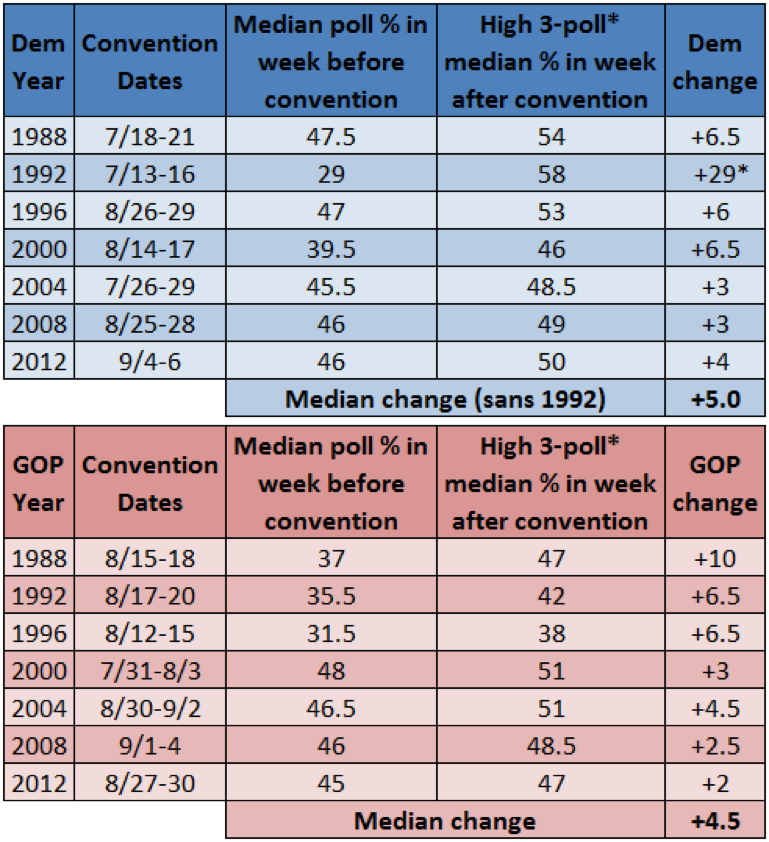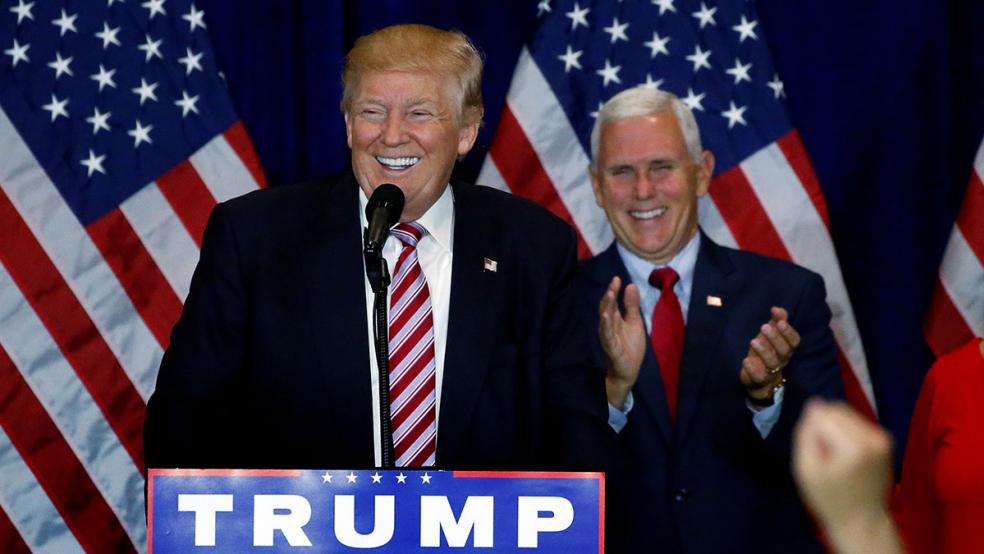As she prepares to claim the Democratic presidential nomination this week in Philadelphia, former secretary of state Hillary Rodham Clinton must brace for the very real possibility that Republican presidential nominee Donald Trump will get a sizeable “bump” in the polls after his performance at the GOP convention in Cleveland.
Trump’s lengthy 75-minute acceptance speech Thursday night was largely panned by the news media as too dark and negative, and overly consumed by his attacks on Clinton’s character, honesty and judgment as a policy maker. Clinton brushed off Trump’s performance at the GOP’s raucous convention as over the top and not in keeping with Americans’ values.
Related: Trump Reveals His Vision in Grim Speech: Call It ‘Twilight in America'
“Well, you know it was kind of perversely flattering,” Clinton said during a campaign event in Tampa Friday afternoon. “It’s hard to believe they spent so much time talking about me and no time talking about jobs or education or health care.”
Yet the relentless Republican assault on Clinton for her mishandling of sensitive government email, her fat speaking fees from Wall Street and her questionable decision-making as President Obama’s chief foreign policy adviser on the Middle East clearly stung. Millions of American TV viewers were treated nightly to the spectacle of GOP delegates calling for her imprisonment.
Despite criticism that Trump spent more time tearing down the country than offering positive solutions, a snap poll by CNN shortly after his acceptance speech showed that the vast majority of Americans contacted liked what they heard.
The survey found that 56 percent of the viewers said they were more likely now to vote for the billionaire businessman after seeing his speech in which he spelled out his vision for the country and vowed to fight “for the forgotten men and women of our country.” Overall, 57 percent of the viewers said they had a “very positive” response to Trump’s tough, law-and-order style speech while an additional 18 percent said they were “somewhat positive.” Only 24 percent said they had a “negative” reaction.
The poll is far from definitive, and there are likely to be more sophisticated and comprehensive polls coming out this weekend and in the days to follow. Clinton held a narrow 2.7 percent lead over Trump in the RealClear Politics cumulative average of national polls, through July 20. The cutoff was the day before Trump delivered his blockbuster acceptance speech.
Related: Trump’s Massive Tax Cuts and New Spending Alarm Fiscal Conservatives
Voter attitudes are likely to change in the coming days, as Americans continue to absorb the week of antics and fiery speeches in Cleveland and listen to what Clinton and her Democratic allies have to say in Philadelphia. Moreover, Clinton’s campaign advisers reportedly are confident that Trump’s speech did more harm than good to his campaign in trying to pull together the fractious party.
As Geoffrey Skelley, associate editor of Sabato’s Crystal Ball, wrote last week, nobody should be surprised to see Trump benefit from a sudden surge in the polls, given the history of presidential campaigns.
“The main point is that conventions almost always generate an increase in a nominee’s polling numbers during and after his or her convention, but often times the bounce is short-lived,” he wrote.
Democratic presidential nominees going back to the 1988 convention benefitted on average from a 5-point bump the week after they were nominated, while Republican nominees claimed a similar 4.5-point bump the week after they became their party’s standard-bearer.
Related: Trump Mum as Anti-Clinton Mood in Cleveland Reaches Outrageous Levels
In some cases, the bump simply fades away and the polling reverts to where it was before the conventions. However, some of the “bump” can be preserved if it reflects an increase in party unity. Both Trump and Clinton are facing substantial rifts: Dissident conservatives led by Sen. Ted Cruz (R-TX) refuse to line up behind Trump, while Clinton is still struggles to patch up differences with the liberal wing of her party after her bruising primary battle with liberal Sen. Bernie Sanders of Vermont.
According to Skelley, Trump needs to get his support among Republicans up to around 90 percent in the polls (right now it’s in the 80 percent to 85 percent range) while Clinton needs Sanders supporters, especially independents, to begin to line up behind her.
“It should surprise no one if Trump gains in surveys following the Republican confab,” Skelley wrote. “In fact, as we said when reacting to Trump’s choice of Indiana Gov. Mike Pence as his running mate, it’s quite possible that Trump will surpass Clinton in the poll averages. And Clinton will probably get her own bounce after her nomination is made official in Philadelphia.”
Here are two interesting charts that describe the effects of past presidential campaign bumps:
Tables 1 and 2: Median poll bounce for major-party nominees, 1988-2012

Sources: The Hotline, HuffPost Pollster (2008, 2012), Polling Report (2000) RealClearPolitics (2004, 2008, 2012), Roper Center
*Clinton’s 1992 post-convention high is disproportionately large because Ross Perot momentarily withdrew from the race on July 16, making it a two-candidate race until Perot re-entered at the start of October.





